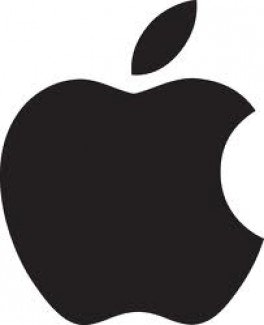
As soon as the company announces earnings, you can be sure that a bevy of analysts, pundits, and investors will start weighing in with their opinions on whether you should buy or sell Apple Inc. (NASDAQ:AAPL) stock. What they might forget to tell you is that the quarter’s earnings need to be taken with a grain of salt — they are not very comparable to the prior year period. Moreover, even Apple’s forecast for next quarter won’t mean much without further context. In other words, whatever you hear, you should be careful not to overreact.
An unusual comparison
Apple went through a historic product launch cycle last fall, as it introduced the iPhone 5, refreshed the full-size iPad, brought the iPad Mini to market, and redesigned its iPod and iMac lineups. These launches led to Apple Inc. (NASDAQ:AAPL)’s first-ever $50 billion quarter, but it also created a gap for much of 2013; Apple still has not launched a new iPad or iPhone this year.
By contrast, Apple released the third generation iPad (the first with a Retina display) in mid-March of 2012. Most of the early sales rush fell into the June quarter, when Apple Inc. (NASDAQ:AAPL) sold 17 million iPads at an average selling price of $538. With no new iPad this year (and new designs expected in the fall), some analysts expect Apple to sell a similar number of iPads in the recently ended quarter, but with a much lower ASP due to the iPad Mini’s popularity.

The iPad Mini has boosted iPad sales, but dampened margins. Image source: Apple.
In other words, the change in the iPad release schedule probably had a significant negative impact on revenue and earnings last quarter. However, the next iPad launch could provide a big boost in the holiday quarter, as long as Apple is able to meet demand.
There were similar “non-comparable” factors affecting iPhone sales last quarter. First, Apple Inc. (NASDAQ:AAPL) ended the March quarter of 2012 with 8.6 million iPhones in channel inventory, whereas it had 11.6 million iPhones in the channel at the end of March this year. With slightly higher iPhone inventory coming into the June quarter this year, Apple Inc. (NASDAQ:AAPL) probably built correspondingly fewer devices.
Additionally, Apple added China Telecom Corporation Limited (ADR) (NYSE:CHA) as a carrier partner in March, 2012. While the big prize in China is China Mobile Ltd. (ADR) (NYSE:CHL), with over 700 million subscribers, China Telecom Corporation Limited (ADR) (NYSE:CHA) was still a significant win, with approximately 129 million subscribers as of 2012. Just as last year’s March iPad release had its biggest effect in the June quarter, the iPhone launch on China Telecom Corporation Limited (ADR) (NYSE:CHA) last March probably provided a one-time boost that carried over to the June quarter.
Beware the outlook
Thus, a variety of issues make it difficult to compare the just-ended quarter with the same quarter of 2012. What about the upcoming quarter? Unfortunately, Apple’s guidance for Q4 of FY13 will not reveal much about business trends without additional context that probably will not be provided.
The problem is that Apple is expected to launch a bevy of new products this fall, just as it did last year. However, investors do not know the exact launch schedule yet, and this will have a major impact on next quarter’s revenue, margins, and earnings. Apple sold 5 million units of the iPhone 5 in its first weekend on sale, which alone would have contributed more than $1 billion of profit.
In other words, until investors know the exact product launch schedule assumed in Apple Inc. (NASDAQ:AAPL)’s guidance, it will be impossible to interpret the numbers. A two- or three-week difference in the product launch time frames would have little effect on Apple’s long-term value — which is what ultimately matters — but could conceivably shift $2-$3 in EPS between the September quarter and the December quarter.
Just breathe
Investors should recognize that Apple’s upcoming earnings release is far less important to the company’s future than the success of the new “hardware, software, and services” slated for release in the fall and 2014 (according to Tim Cook’s comments on last quarter’s earnings call).
It’s natural to pounce on every nugget of information available to decide whether to buy, sell, or hold a stock. However, in Apple’s case, this short-term focus could cause you to miss the bigger picture. As I recently pointed out, while Apple’s earnings have taken a step backward in 2013, revenue is still growing and the company’s margins are likely to stabilize going forward, leading to a rebound in profitability next year. Investors should keep their eyes on Apple Inc. (NASDAQ:AAPL)’s long-term value and avoid making a rash decision to buy or sell based on next week’s earnings report alone.
The article When Apple Reports Earnings, Take It With a Grain of Salt originally appeared on Fool.com and is written by Adam Levine-Weinberg.
Fool contributor Adam Levine-Weinberg owns shares of Apple and is long January 2015 $390 calls on Apple. The Motley Fool recommends Apple. The Motley Fool owns shares of Apple and China Mobile.
Copyright © 1995 – 2013 The Motley Fool, LLC. All rights reserved. The Motley Fool has a disclosure policy.





